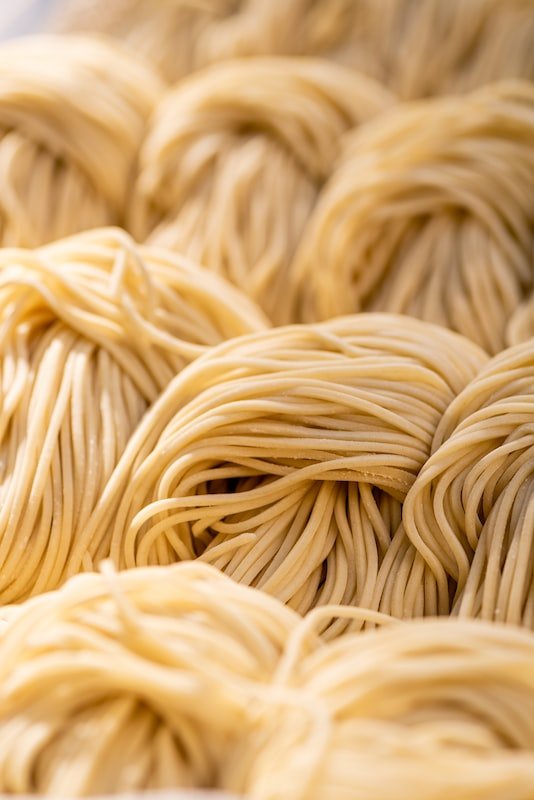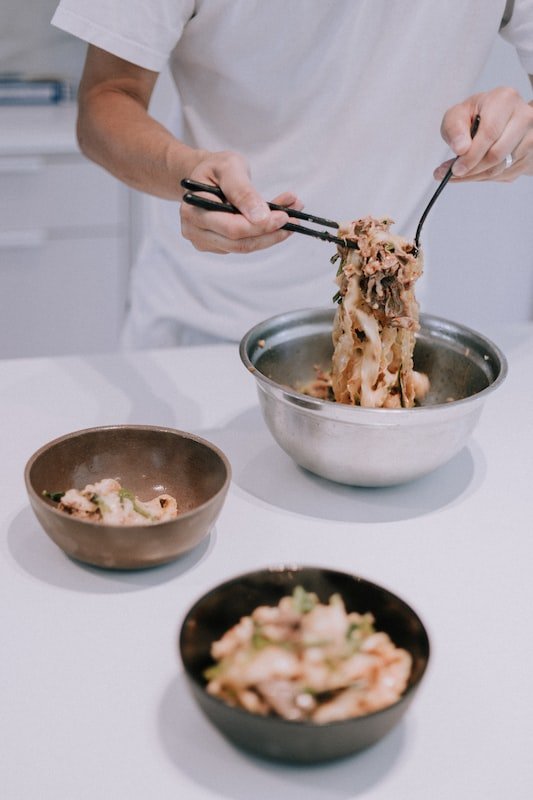The first thing you do on your journey is going to be eating some ramen. You might have tried it out a few times in a ramen shop, or you might have overheard some of your friends gushing about how delicious it is. Either way, you’re probably familiar with the dish. You made the decision to begin the process by going out and buying some noodles, right?
Do ramen noodles go bad?
You might also believe that you are not a very good cook, so you may have recently stocked up on several packs of instant ramen noodles to get you through the week. There are still some of them in the pantry even though it has been a few months since they were purchased. You are now interested in knowing how long they will continue to work and whether or not you can still put them to use.
You might have also decided to step up your game by purchasing some fresh wheat noodles to use in the preparation of a chicken or beef ramen dish for the weekend dinner. You might have done this because you wanted to try something new. And at this point, you are not entirely certain as to whether or not the freshly made noodles need to be stored in the refrigerator. Or if you are able to freeze any noodles that are left over after they have been cooked because they have a short shelf life.
If you are interested in learning more about ramen noodles, you should keep reading even if you have already made up your mind about which option to pick. We discuss the optimal conditions for storing ramen noodles, as well as the length of time they can be kept on store shelves before they begin to spoil. Because we sell instant, dried, and fresh noodles, you can feel secure in the knowledge that we can accommodate whichever variety of noodles you have a craving for at any given time.
A Guide to Preserving the Quality and Taste of Ramen Noodles
The noodles that come in ramen can typically be purchased in one of three fundamentally different varieties. There is also the choice of dried instant noodles, which are most frequently sold in block form. This alternative can be purchased. Another type of noodle is made from wheat and has the appearance of spaghetti with a greater thickness. And last but not least, we have the fresh ramen noodles that are utilized in virtually all establishments that serve ramen.
Even though the word “ramen” might be printed on the packaging, you should be aware that there are some people who think that dried instant noodles have nothing at all to do with ramen. To keep things simple, however, let us pretend that ramen noodles and dried instant noodles are the same thing for the duration of this conversation. The next topic on the agenda is storage, so let’s move on to that.
The conditions that should be maintained for the storage of dried instant noodles are not required to be particularly stringent. As long as you keep the packs in a location that is cool, dry, and dark as well as at room temperature, you shouldn’t have any problems. You should use the entire block of dried noodles in almost any circumstance; however, if you find that you need to break it up into smaller pieces, you can do so. The leftovers can be easily stored by placing them in a container or bag that can be sealed, and then putting them back where they were originally found. This will allow them to remain fresh for a longer period of time.
The recommendations for storing other types of noodles are not too dissimilar from the recommendations for storing wheat noodles. Choose a spot that has some protection from the sun and is away from any other potential sources of heat. This task can easily be accomplished in the kitchen by using either the cabinet or the pantry.
After taking the item out of its original packaging, you should either reseal it in as tight of a manner as you can or move it to a container that is airtight or a freezer bag, whichever method you choose. The method that we use to store dry pasta is, for all intents and purposes, the same as the method that we use to store other dry goods.
The fresh noodles are served last, but their importance cannot be understated. If you select this variety, you have to make a mental note to store the noodles in the refrigerator as soon as you bring them inside your home even if you plan on eating them right away. If you aren’t sure whether or not the ones you have are fresh, you can determine whether or not they are the fresh ones by looking at how they were stored. If they were kept in the refrigerator, then you know they are the fresh ones.
If you don’t use all of them right away, put any that are left over in a container that can seal tightly and store it in the refrigerator. As an additional point of reference, freezer bags are of great assistance in this regard. In addition, considering that fresh noodles do not have a particularly long shelf life, it is a perfectly reasonable practice to freeze them.
It has been discovered that fresh noodles can be frozen successfully without losing their quality. If they have not yet been opened, you can freeze them in the original package; if they have been opened, you can use a freezer bag or double-wrap the package in aluminum foil. If they are still in their original packaging, you can freeze them in that. Place the bags of frozen noodles in the refrigerator so that they can defrost overnight.
How Long Should Ramen Noodles Be Kept in the Refrigerator to Maintain Their Freshness?
Let’s get things going once more with some instant dry noodles, shall we? It is more common to speak in terms of years rather than months when referring to their shelf life. There is probably a “best if used by” date printed on the packaging, but given that these noodles already contain preservatives, there is a good chance that they will be fine for a few months after that date has passed. Given that these noodles already contain preservatives, there is a good chance that there is a date printed on the packaging that says “best if used by.”
On the packaging of wheat noodles, which are in the same category as pasta, there is always going to be an expiration date printed. However, given that this product is not subjected to the same level of processing as instant noodles, their shelf life is typically closer to one year, or possibly even one and a half years. This is due to the fact that this product is not subjected to the same level of processing as instant noodles. After that date, the noodles will maintain their high quality for a few more months; however, after that point, their quality will begin to decline, and they will no longer be edible. This process will continue indefinitely.
It’s safe to say that fresh noodles have the shortest shelf life of all the different kinds. In most cases, they have a shelf life of between two and three weeks when kept in a refrigerator. If you need to keep them for a longer period of time than usual, the best way to do so is to freeze them.
In case you were wondering, the answer is yes; both instant and wheat noodles can be frozen. However, given that both types of noodles have a fairly long shelf life, there is typically not much point in doing so because they can be stored for quite some time.
How to Tell If the Ramen Noodles You Bought Are Still Good or If They’ve Gone Bad
Before you start preparing the broth, the miso paste (if you use it), and all of the food you want to add to the bowl, you should make sure that the noodles are as fresh as possible, don’t you think that makes a lot of sense?
When it comes to instant dried noodles, as long as the package they came in was not subjected to any moisture, the noodles should be fine even if the package was.
Take the block out of its packaging and examine it thoroughly from every angle before placing it back in its original location. The following step is to crush the noodles using your fingers, and then carefully examine them to make certain that they do not contain any undesirable contaminants such as mold or insects. One final step before continuing with the meal is to take a whiff of the noodles; if everything smells good, you can move on to the next course.
Making wheat noodles follows a process that is, for the most part, equivalent to the one that was just described. Verify that the food is dry, that the packaging does not have any insects in it, and that it does not have an odor that is offensive.
It is not very common for instant noodles or their counterparts made from wheat to become spoiled in a way that makes them unsafe to eat. The worst thing that can happen after cooking the noodles is that they will have a flavor that is slightly stale, but other than that, there isn’t a whole lot else that can go wrong.
However, due to the fact that fresh ramen noodles contain moisture, it is possible for mold to grow on them if they are stored for an inordinately long period of time or in conditions that are not ideal.
The very first thing that must be done is to examine the noodles very carefully, looking for any indications of mold or any dark specks in their surface. The next thing you need to do is give it a good whiff to find out if it has the right aroma or not. If everything checks out and you don’t keep the fresh noodles for an excessively long period of time (like more than a month), then the preparation of them should be completely risk-free.




